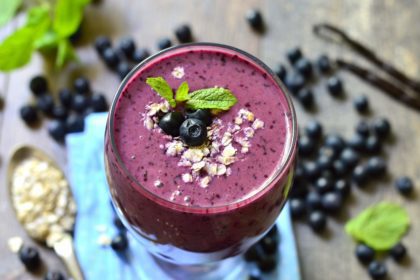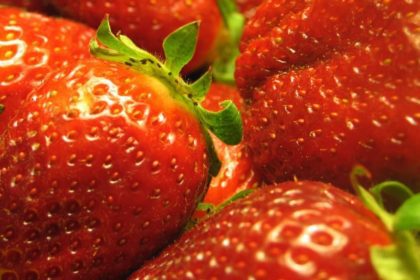Did you know… that a spoonful of black rice bran contains more powerful antioxidants than a spoonful of blueberries?

The “Forbidden Rice”
In ancient China, black rice was known as “forbidden rice” because only the emperor and members of the royal family were allowed to eat it.
Black rice was first introduced to the United States in the 1990’s.
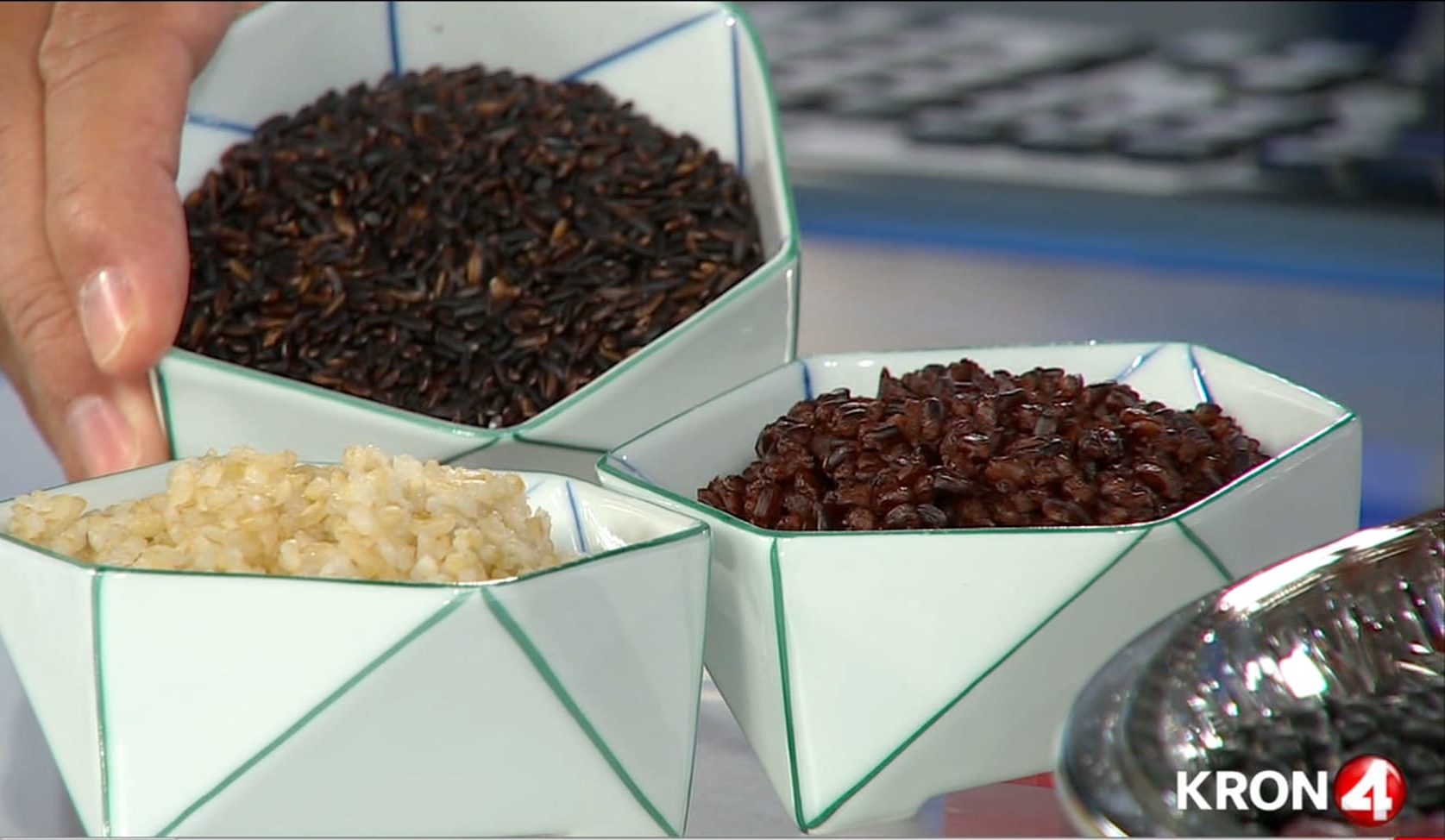
Characteristics of Black Rice
- Color: Raw black rice is black or dark brown. When cooked, it becomes a deep purple-burgundy due to the healthful pigments (anthocyanins).
The color will transfer to other foods, so if you combine brown rice with black, it’ll turn a purple hue.
- Taste: Black rice has a roasted nutty taste. It’s used in Asian desserts as well as for food coloring, noodles, sushi, and pudding.
- Storage: Store in the refrigerator and use within 3 months.
Superior Nutrition
Black rice is a whole grain and more nutritious than brown and white rice. It has more fiber, protein, and iron as well as fewer calories and carbohydrates. Here’s how they compare:
 1/4 cup uncooked BLACK rice (Organic Black Pearl Rice by Lundberg® Family Farms)
1/4 cup uncooked BLACK rice (Organic Black Pearl Rice by Lundberg® Family Farms)
160 calories
33 grams carbohydrates
5 grams protein
3 grams fiber
6% iron
1/4 cup uncooked BROWN rice (by Sukoyaka Genmai*)
190 calories
42 grams carbohydrates
3 grams protein
3 grams fiber
0% iron
🙂 Sukoyaka Genmai is a “sticky” brown rice, so it can be used to make sushi.
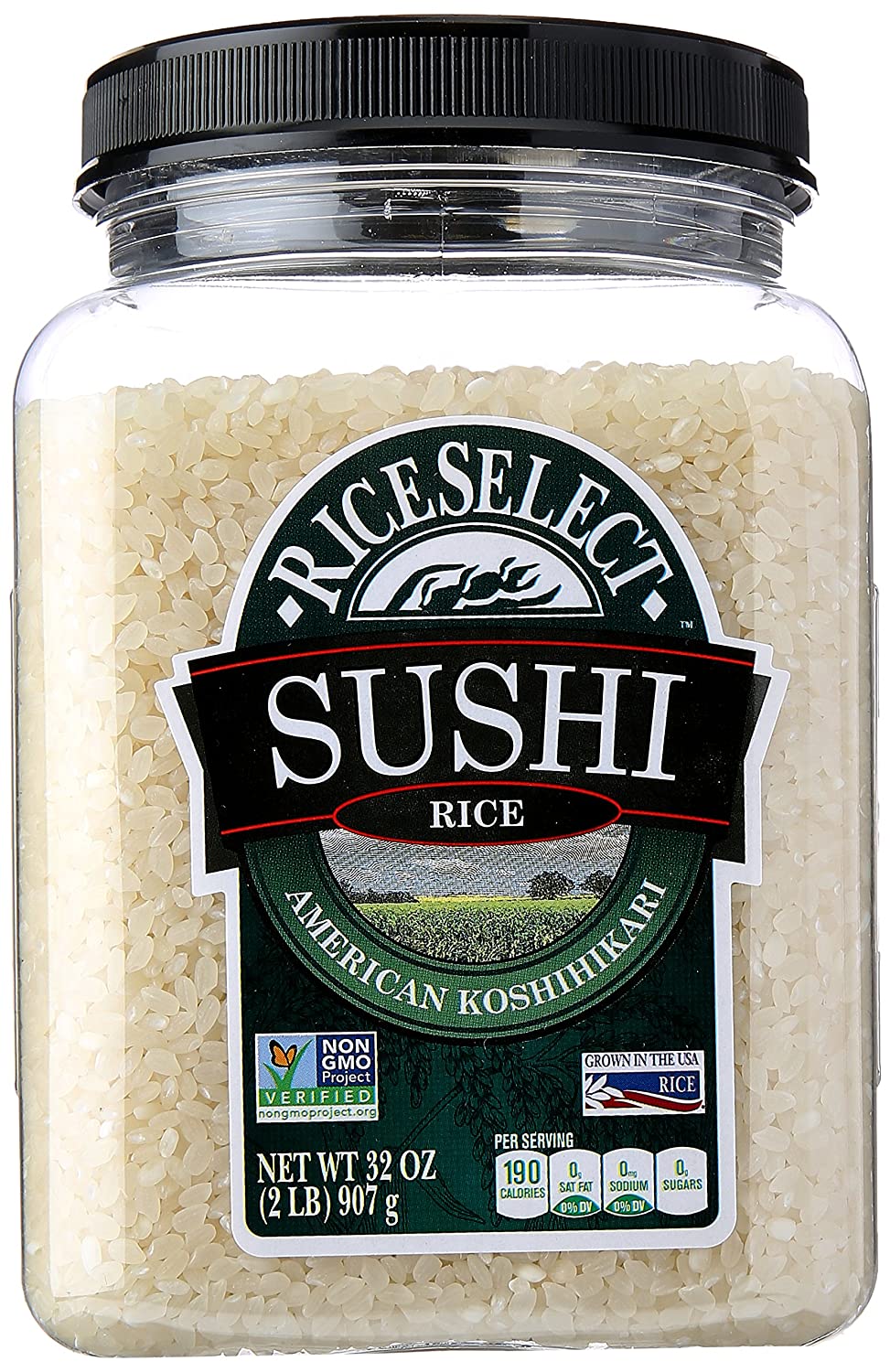
1/4 cup uncooked WHITE rice (by Rice Select™)
190 calories
45 grams carbohydrates
3 grams protein
Not a significant source of dietary fiber or iron
The Color is the Antioxidant!
Anthocyanins are plant pigments, the same pigments that give blueberries, purple grapes, plums, tart cherries, and beets their color and health benefits.
These deep red/purple/blue pigments are the marker of its high antioxidant properties which:
- Have anti-inflammatory effects (There is a correlation between chronic systemic inflammation and chronic disease.)
- Protect against carcinogens
- May help prevent heart disease (Compared to white rice, black rice decreased atherosclerotic plaque formation by 50% in rabbits.)
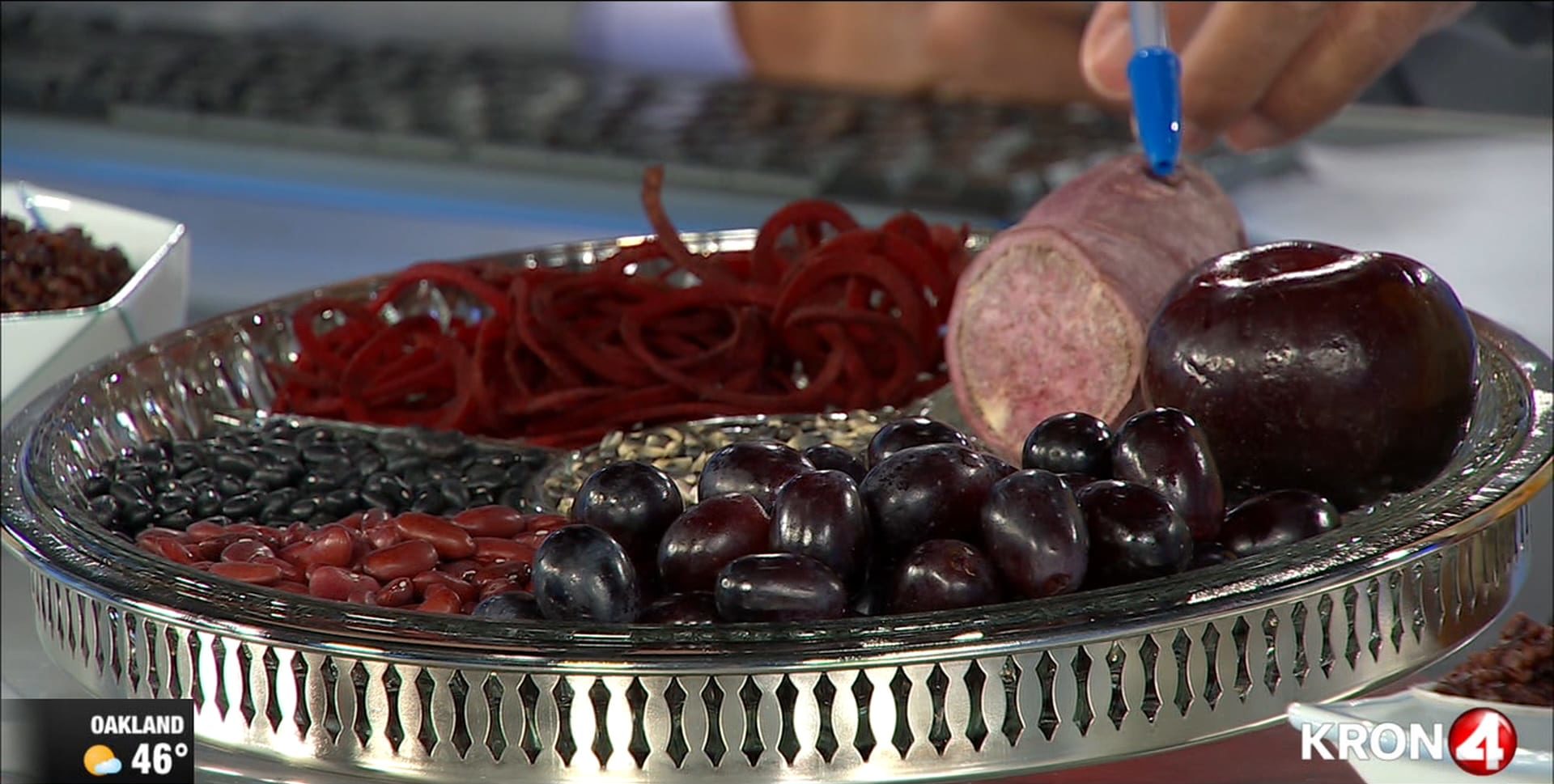
A study showed that a spoonful of black rice bran contains more anthocyanins than a spoonful of blueberries. The bran hull of black rice (outer husk of the grain) contains the highest levels of anthocyanin in food.
Black Rice to Blueberries
Compared to 1/2 cup of blueberries, a 1/2 cup of cooked black rice contains:
- More vitamin E – Vitamin E is a fat soluble vitamin and antioxidant in the nutrient rich “bran” (outer husk) and is essential for maintaining eye, skin, and immune health.
- 10 gm protein (compared to 1.1 gm)
- Zero sugar (compared to 7.4 gm)
- 6 gm fiber (compared to 1.8 gm)

Other Health Benefits of Black Rice
- Helps reduce risk of diabetes. Black rice is higher in fiber than brown rice which slows digestion (maintaining consistent sugar levels) and is lower in carbohydrates.
- Prevents risk of overweight. Fiber gives you a feeling of fullness which helps prevent overeating.
- Source of powerful antioxidants called “anthocyanins”.
- Provides muscle-building protein.
Arsenic Levels
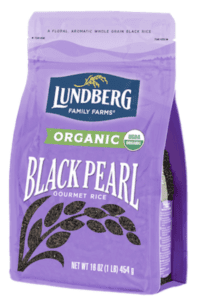
Scientists are finding that rice contains arsenic, a heavy metal.
Arsenic is a naturally occurring element that’s present in soil, water, and air due to minerals in the earth and can eventually end up in food, e.g., fruits, vegetables, grains, drinking water, and wine.
In 2012 and 2014, Consumer Reports performed tests on rice and reported high levels of arsenic.
However, a study out of Harvard found NO increased cancer risk from long-term consumption of rice (eating five or more servings of white or brown rice a week) in U.S. men and women.
The Harvard study states that future research is warranted to better evaluate the effect of arsenic in food with cancer risk.
Organic vs Conventionally Grown Foods
Arsenic is absorbed by plants regardless of whether they are grown under conventional or organic farming practices since the metal is present in the soil and water.
Cooking Tips to Reduce Arsenic Content
New FDA research shows that just rinsing rice prior to cooking it has little effect on reducing the arsenic content in the cooked grain.

- Cook in 6 parts water per 1 part rice (6:1). This drastically reduces arsenic levels by 40% as arsenic is water-soluble. Think of the rice like pasta.
- Cook in 10:1 water to rice ratio drops arsenic levels by 60%.
- Soak the rice overnight, then cook in 5:1 (fresh) water to rice ratio, rinse again. This process reduces 82% of the arsenic. Soaking rice opens up the grain’s structure, and allows arsenic to permeate into the water. Drain and rinse thoroughly with fresh water.
Arsenic also escapes into the cooking water and is removed when water is drained, BUT if all the water evaporates, the arsenic is reabsorbed back into the rice.
Don’t let the rice boil dry. Once the rice is tender, rinse one more time with hot water before serving.
Arsenic vs Anthocyanins
Watching all those rich purple antioxidants wash down the drain can be unsettling when you’re making the effort to upgrade your consumption of rice.
You will be reducing the anthocyanin concentration by cooking black rice this way, but you will also be reducing arsenic concentration considerably too.
It can, though, promote the partial migration of antioxidants from the outer bran layer into the inner bran layer of rice (the endosperm).
![]() Karen’s Fit Tip: If you really like rice, choose black for its unique health benefits. For arsenic concerns, cook your rice in plenty of water and AVOID eating rice grown in Arkansas, Texas, Louisiana, and China (due to higher levels of arsenic).
Karen’s Fit Tip: If you really like rice, choose black for its unique health benefits. For arsenic concerns, cook your rice in plenty of water and AVOID eating rice grown in Arkansas, Texas, Louisiana, and China (due to higher levels of arsenic).
Also, after boiling the rice, you can “dry it out” by putting the drained rice in a pot over low to medium heat and stir for a minute or two.
NOTE: Whole grains, such as quinoa, buckwheat, and millet contain low levels of arsenic, but be sure to get your purple/blue anthocyanins from other fruit and vegetable sources.


